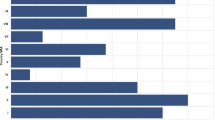Abstract
An effective national health service structure requires a comprehensive programme for primary health care in peripheral and rural areas. This is especially important in under-resourced countries where facilities are sparse, the population is widely dispersed and transport is limited. Haematology has a key role in diagnosis and patient management by selecting tests for their clinical relevance and utility for the specific circumstances, and ensuring their technical reliability when used in health clinics and point-of-care testing. WHO has proposed a basic menu of tests in three categories: (a) tests such as haemoglobin screen which can be performed by nurses, midwives, health-aides or community doctors, (b) tests such as haemoglobinometry, microhaematocrit and microscopic examination of stained preparations which can be performed by a technician or laboratory assistant in a health centre, (c) tests requiring greater technical expertise of a laboratory technician or trained doctor. The peripheral health clinics and district laboratories must be familiar with the guidelines on standardized methods for collecting and storing specimens and transporting them to a regional laboratory or a reference centre. A training syllabus should be provided at the health centres and district laboratories, and this should include on-site instruction from supervisors and access to training manuals and distance-learning material. A co-ordinated programme of quality assurance and standardization of test methods should be established by a reference centre or national health authority with a network which encompasses all laboratories and health clinics undertaking any tests. Each regional laboratory should foster lower level laboratories or clinics within its neighbourhood. Of particular concern is the reliable diagnosis and management of anaemia. WHO reports indicate that 40% of the world population suffer from anaemia, especially affecting pregnant women, and a high proportion of infants and children in developing countries. The Haemoglobin Colour Scale (HCS) was recently developed for WHO as a simple, cheap and portable device which reads haemoglobin within 1 g/dl of the true value. It has been validated in a number of studies and is now manufactured commercially in accordance with WHO specifications under control of a WHO Collaborating Centre. It has an important potential role in the resource-limited environment where anaemia screening presently usually depends on unreliable clinical examination.
Similar content being viewed by others
References
Bates I. Haematology in under-resourced laboratories. In Dacie & Lewis Practical Haematology 9th edn, Ch 26. Churchill Livingstone, London. 2001.
Ingram CF, Lewis SM. Clinical use of WHO haemoglobin colour scale: validation and critique.J Clin Pathol. 2000; 53:933–937.
International Society of Hematology/International Council for Standardization in Haematology. Specimen collection, storage and transmission to the laboratory for hematological tests.International J Haematol. 2002. In press.
Lewis SM. The WHO external quality assessment scheme for haematology.Bulletin of the World Health Organization. 1988; 66:283–290.
Lewis SM. Quality assurance in haematology. Document WHO/LAB/98.4. WHO, Geneva. 1998.
Lewis SM, Bain BJ, Bates I. Dacie & Lewis Practical Haematology 9th end. Churchill Livingstone, London. 2001.
Lewis SM, Emmanuel J. Validity of the haemoglobin colour scale in blood donor screening.Vox Sanguinis. 2001;80:28–53.
Lewis SM, Stott GJ, Wynn KJ. An inexpensive and reliable new haemoglobin colour scale for assessing anaemia.Journal of Clinical Pathology. 1998;51:21–24.
Montresor A, Albonico M, Khalfan N, et al. Field trial of a haemoglobin colour scale: an effective tool to detect anaemia in preschool children.Tropical Medicine and International Health. 2000;5:129–133.
World Health Organization. Laboratory services for primary health care: requirements for essential clinical laboratory tests. Document WHO/LAB/98.1. WHO, Geneva. 1998a.
World Health Organization. The World Health Report 1998. WHO, Geneva. 1998b.
Author information
Authors and Affiliations
About this article
Cite this article
Lewis, S.M. Laboratory practice at the periphery in developing countries. Int J Hematol 76 (Suppl 1), 294–298 (2002). https://doi.org/10.1007/BF03165266
Issue Date:
DOI: https://doi.org/10.1007/BF03165266




